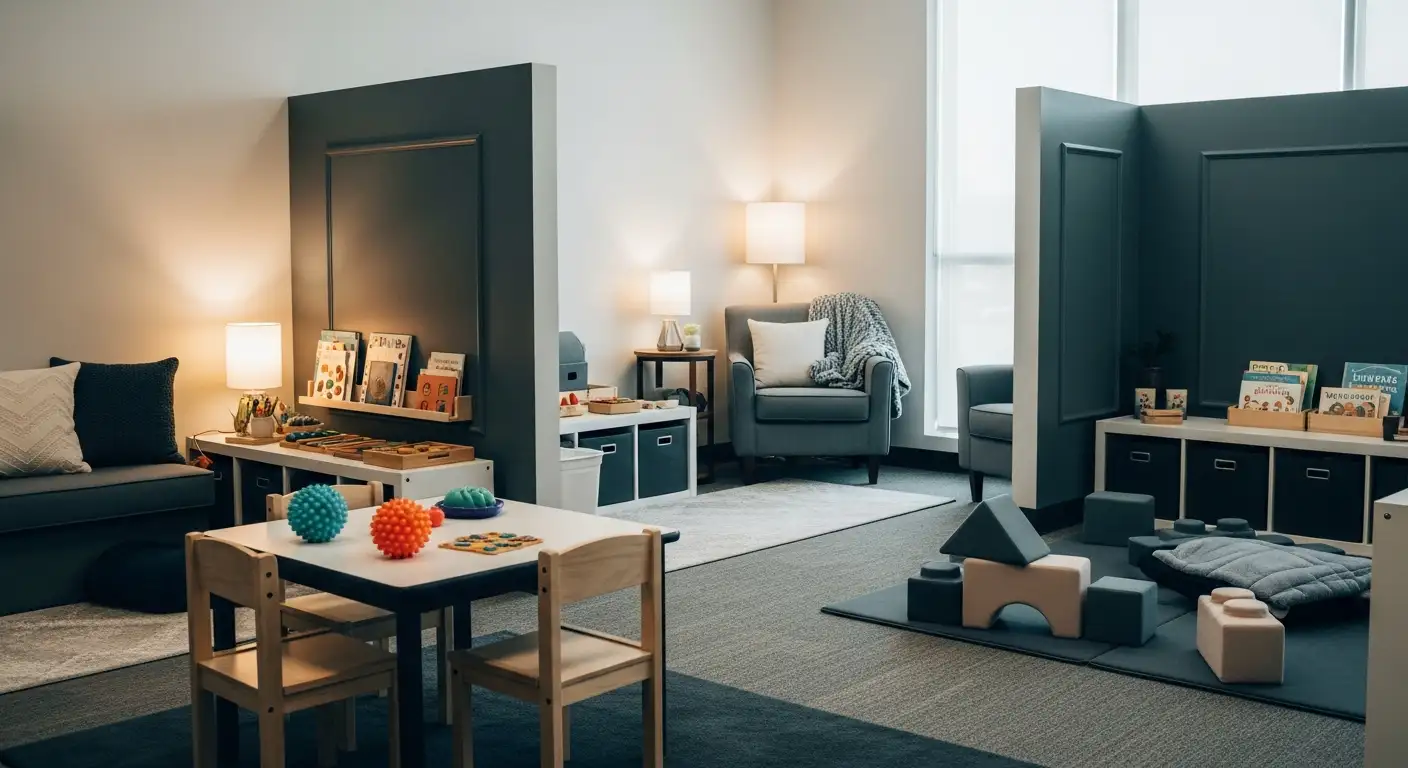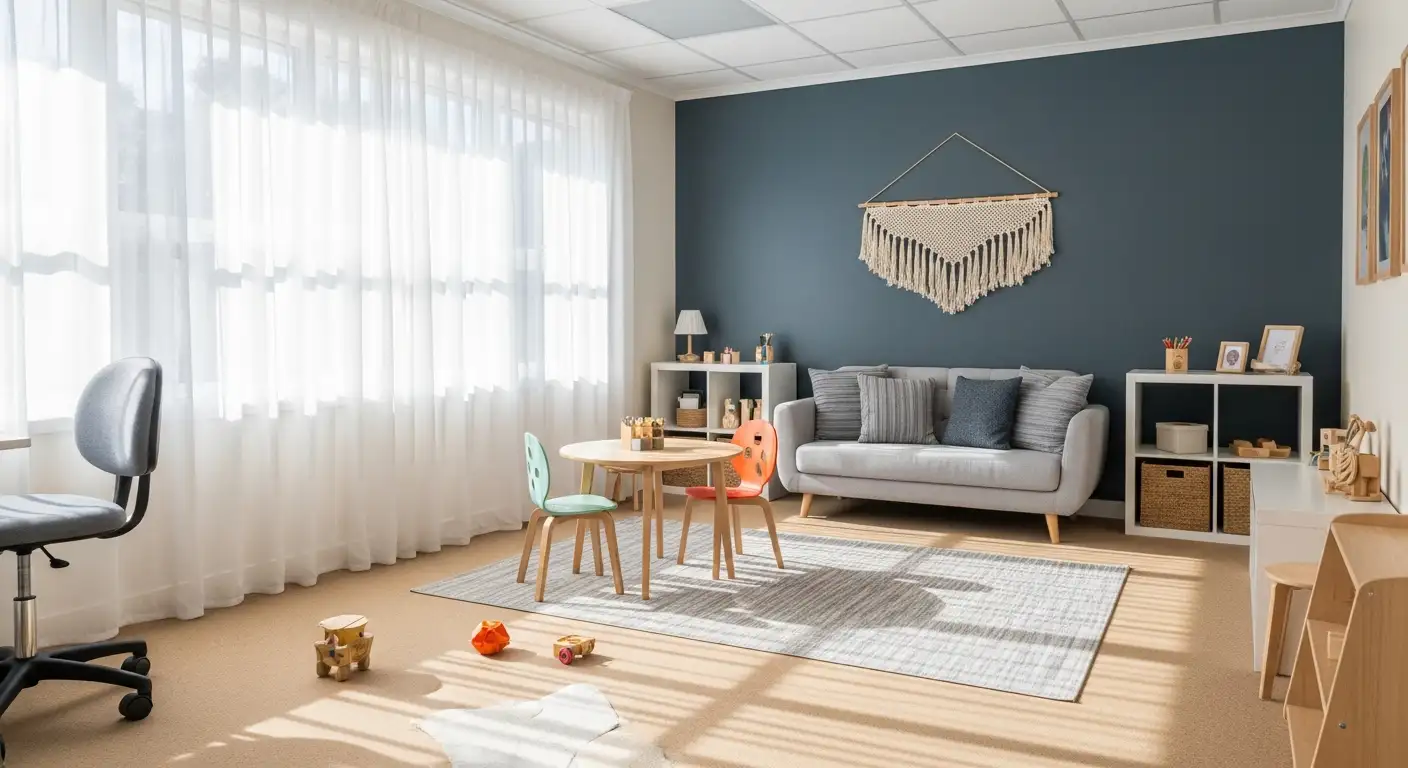Unlocking the Power of Play in Autism Intervention
Applied Behavior Analysis (ABA) therapy plays a vital role in supporting children with autism and developmental disorders by emphasizing the importance of play in fostering social, communication, and behavioral skills. Its strategic use of play-based activities enables children to develop cooperation, independence, and confidence, making social interactions more accessible and meaningful. This article explores the methods, benefits, and techniques used within ABA to promote cooperative play, highlighting how structured and naturalistic play experiences serve as powerful tools in early childhood development.
Leveraging Play to Promote Cooperative Behaviors
How does ABA therapy encourage cooperative play?
ABA therapy utilizes both structured and naturalistic play methods to foster cooperation among children with autism. These activities are designed to be engaging and tailored to each child's development level, which helps keep children motivated and involved.
One primary strategy involves structured play activities like board games, pretend play, and building exercises that teach turn-taking, sharing, and collaborative problem-solving.
Naturalistic approaches, on the other hand, embed social skills development into everyday routines and play. For example, therapists might arrange peer playdates, role-playing scenarios, or social stories that imitate real-life interactions.
Therapists also incorporate techniques such as peer-mediated interventions, where typically developing peers assist in modeling and reinforcing social and cooperative behaviors.
Reinforcement plays a crucial role. Children receive positive feedback when they engage in sharing, waiting for their turn, or greeting peers, which strengthens these behaviors.
Parent involvement during play sessions helps reinforce these skills at home, creating consistency and greater opportunities for practice.
Through these methods, ABA therapy turns play into a powerful platform for learning social skills, helping children with autism to better engage with peers, understand social cues, and develop independence.
How does the transfer of skills to real-world interactions occur?
The emphasis on peer play and collaborative activities helps children generalize their learned behaviors outside therapy settings. As children practice sharing, turn-taking, and initiating conversations with peers, these skills become more natural.
Gradually, children become more comfortable in social environments, leading to better interactions in school, community activities, and family settings. This skill transfer enhances their social confidence and overall quality of life, illustrating the effectiveness of ABA therapy in nurturing essential social and cooperative behaviors.
Strategies and Methods Utilized by ABA Therapists
How do ABA therapists promote social and cooperative skills?
ABA therapists employ a variety of approaches to help children develop essential social and cooperative skills. One foundational method involves breaking complex social behaviors into smaller, manageable components. This allows children to learn each step thoroughly before moving on to more advanced skills.
Modeling is a common strategy, where therapists demonstrate desired behaviors such as sharing, turn-taking, or greeting peers. Prompting is then used to guide children through these behaviors, gradually reducing support as they become more independent. Reinforcement—praising or rewarding successful attempts—encourages children to repeat positive behaviors.
Behavioral Skills Training (BST) is a structured approach that combines explanation, demonstration, guided practice, and feedback to enhance learning. This method helps reinforce understanding and mastery of social skills.
Additionally, social stories, social scripts, and role-playing activities teach children about social norms, cues, and appropriate responses. Visual supports, such as pictures and charts, enhance understanding, especially for children with communication challenges.
Group activities, such as collaborative games and team projects, provide safe environments where children can practice teamwork, negotiation, and conflict resolution. These settings help in generalizing skills to real-world situations.
Involving families plays a crucial role, as it allows for consistent reinforcement of skills at home and in community settings. Parents and caregivers learn strategies to create social opportunities, facilitate peer interactions, and support ongoing development.
By integrating these diverse techniques, ABA therapists create comprehensive programs that foster social competence and cooperation in children, leading to more meaningful peer relationships and improved social functioning.
| Strategy/Method | Description | Example Use |
|---|---|---|
| Breaking Down Skills | Segmenting complex behaviors into smaller steps | Teaching greeting by first making eye contact, then saying hello |
| Modeling | Demonstrating desired social behaviors | Therapist demonstrates sharing toys during play |
| Prompting | Providing hints or cues to guide behavior | Physically guiding hand to encourage a handshake |
| Reinforcement | Rewarding successful attempts | Praising a child for initiating a conversation |
| Behavioral Skills Training (BST) | Explanation, demonstration, practice, feedback | Role-playing to practice requesting assistance |
| Social Stories/Scripts | Short stories or dialogue templates about social situations | Reading a story about taking turns in a game |
| Visual Supports | Using pictures or charts to aid understanding | Visual schedule for morning routines |
| Group Activities | Structured group play for practicing skills | Building a team project with peers |
| Family Involvement | Training parents to reinforce skills at home | Role-playing social interactions during parent coaching |
These methods work synergistically to equip children with the social and cooperative skills necessary for success in everyday interactions.
Benefits of ABA in Developing Cooperative Play

What are the benefits of ABA therapy in developing cooperative play behaviors?
ABA therapy plays a crucial role in fostering cooperation among children with autism, helping them learn how to share, take turns, and participate in group activities. This therapy uses structured and engaging methods, including positive reinforcement and modeling, to teach essential social skills.
Through ABA, children learn to make eye contact, initiate conversations, and interpret social cues—all fundamental for successful cooperative play. Therapists often introduce activities like board games, pretend play, or outdoor group tasks, tailored to each child's interests and developmental level.
Early and personalized interventions improve communication and emotional regulation. As children practice these skills consistently, they develop confidence in social settings, which translates into better peer relationships and social adjustment.
By focusing on behaviors, ABA therapy creates a flexible yet scientific approach that nurtures social interactions, enhances communication, and manages behaviors effectively. These benefits collectively support children in engaging more successfully in cooperative play, promoting their overall social integration.
| Skill Focus | How ABA Supports | Additional Details |
|---|---|---|
| Sharing and turn-taking | Reinforced through structured play and positive feedback | Techniques include role-playing, prompting, and reinforcement to encourage sharing and patience |
| Social communication | Modeling and imitation help develop initiating and maintaining interactions | Focuses on eye contact, gestures, and understanding social cues |
| Emotional understanding | Recognizing emotions and body language improve social responses | Helps children cope with social situations more effectively |
| Building confidence | Gradual skill development boosts self-esteem | Consistent reinforcement and success experiences foster independence |
Implementing these strategies not only enhances cooperative play but also builds a foundation for broader social skills, helping children with autism grow more autonomous, engaged, and socially connected.
Techniques for Fostering Social and Play Skills

What techniques are used in ABA to foster social interactions and play skills in children?
ABA therapy employs a variety of strategies to help children develop social and play skills in engaging and effective ways. One fundamental method is Discrete Trial Training (DTT), which breaks down complex behaviors into simple, manageable steps and uses repetition and reinforcement to teach desired skills. This technique is particularly effective for establishing foundational behaviors such as eye contact, greetings, and requesting.
Another prominent approach is Natural Environment Teaching (NET)). This strategy involves teaching skills in real-life settings, such as during play or daily routines, making learning more relevant and motivating for children. NET emphasizes spontaneous teaching moments, encouraging children to use skills in natural contexts.
Chaining and activity schedules are also important. Chaining links small steps together to help children complete multi-step activities, like brushing teeth or dressing. Activity schedules use visual supports to structure daily routines, which can reduce anxiety and promote independence.
ABA also recommends combining structured techniques with less formal, unstructured activities like free play. During play, children can practice sharing, turn-taking, and initiating interactions in a natural and motivating environment.
Utilizing prompting and reinforcement—positive feedback for correct behaviors—further encourages skill acquisition. Video modeling or live demonstrations show children appropriate behaviors to imitate. These methods help children generalize skills across different settings.
Caregiver and therapist involvement is crucial. Building rapport through engaging activities, tracking progress with data, and gradually reducing prompts foster independence. Play-based ABA encourages children to participate actively and enjoy learning social and play skills.
In summary, ABA’s multifaceted approach combines deliberate teaching methods like DTT, NET, chaining, and activity schedules with natural, play-based activities. This comprehensive strategy supports children in acquiring social behaviors, developing meaningful relationships, and engaging confidently in their environment.
The Role of Play Within ABA to Enhance Cooperation

What role does play have within ABA therapy to enhance cooperative behaviors?
Play is a fundamental element of ABA therapy that creates a fun, engaging environment for children to learn and practice social skills. It allows children to develop behaviors like sharing, turn-taking, requesting, and following instructions—skills essential for effective social interaction.
Through structured activities such as board games, pretend play, and group projects, children are encouraged to collaborate and communicate. These experiences foster motivation and help children stay interested and actively participate in therapy sessions.
Play also helps in generalizing learned skills to real-life situations. When children practice social behaviors during play, they are more likely to use these skills outside of therapy, in everyday life.
In addition, play-based methods leverage modeling, prompting, and reinforcement. For example, adults may model desired behaviors or provide gentle prompts, then reinforce successful attempts with praise or rewards.
This approach boosts children’s confidence as they experience success in social interactions, building stronger relationships and promoting independence.
How does ABA therapy support the development of communication, social interaction, and self-care skills in children?
ABA therapy uses playful activities to teach communication, such as requesting needs or wants through words or gestures. It emphasizes social exchanges like turn-taking and greeting others.
The therapy also targets self-care skills like dressing, grooming, and neatly putting away belongings through step-by-step procedures integrated into play. This helps children learn routines in a context they find motivating.
How does ABA therapy build confidence and social skills?
Playing encourages children to try new behaviors without fear of failure. As they experience success through reinforcement, their self-esteem improves.
The therapy’s focus on positive reinforcement and gradual skill-building helps children feel more comfortable engaging with others. Peer interactions during play further enhance their ability to initiate conversations, share, and respond appropriately.
How does ABA support the generalization of skills through play?
Skills learned during structured play can transfer to natural settings, like classrooms or playgrounds. Because play is a familiar and safe activity, children are more likely to apply these skills in broader social contexts.
It’s also effective to involve parents in play-based sessions, enabling them to reinforce the same behaviors at home. This consistency supports long-term development and mastery of social skills.
| Techniques Used in Play-Based ABA | Description | Purpose |
|---|---|---|
| Modeling | Demonstrating desired behaviors | Teaching appropriate social responses |
| Prompting | Providing cues or hints to guide behavior | Encouraging correct actions |
| Reinforcement | Offering praise or rewards | Increasing likelihood of behavior repetition |
| Peer-Mediated Play | Engaging peers in structured activities | Enhancing social interaction |
| Natural Environment Teaching (NET) | Using real-life surroundings for learning | Promoting generalization |
Overall, play acts as a vital tool within ABA to foster cooperation, bolster social skills, and help children with autism develop confidence and independence in a supportive setting.
Creating Supportive Environments for Learning and Socialization

How to Minimize Distractions
A calm and organized space helps children focus during ABA therapy sessions. Reducing noise, clutter, and visual distractions allows children to concentrate on tasks and interactions, making learning experiences more effective.
Providing Comfort Items
Items like favorite stuffed toys, blankets, or sensory tools can create a sense of security for children. Comfort items help children feel at ease, encouraging participation and reducing anxiety during therapy.
Utilizing Familiar Toys
Using toys and materials the child already enjoys can boost motivation. Familiar toys also serve as effective prompts for learning social and communication skills.
Gradual Interaction Facilitation
Start with non-intrusive adult presence, associating the environment with positive experiences. As the child becomes more comfortable, gradually introduce peer interactions and structured play activities to foster social skills.
Involving Parents and Caregivers
Involving family members strengthens the child's progress. Parents can reinforce skills learned in therapy at home and participate in play sessions, creating a consistent and supportive learning environment.
| Strategy | Purpose | Practical Tips |
|---|---|---|
| Minimize distractions | Improve focus and engagement | Clear space, limit noise, reduce visual clutter |
| Provide comfort items | Reduce anxiety, foster security | Offer favorite toys, sensory objects |
| Use familiar toys | Boost motivation and participation | Incorporate preferred toys into therapy sessions |
| Facilitate gradual interaction | Build comfort and social skills | Start with adult-led activities, slowly include peer play |
| Engage family members | Reinforce learning and generalization | Include parents in sessions, teach at-home practices |
Creating an environment that is safe, familiar, and free of unnecessary distractions is essential in ABA therapy. These strategies help children with autism develop confidence, social skills, and independence in a comfortable setting.
Effective Strategies for Peer Integration and Play

What are structured playdates and how do they help in ABA therapy?
Structured playdates involve organizing specific times for children to play together under supervision. These sessions focus on practicing social skills like sharing, taking turns, and communicating. By providing a safe and predictable environment, children learn to engage positively with peers, which promotes social development and confidence.
How does naturalistic teaching assist in peer integration?
Naturalistic teaching involves incorporating learning opportunities into everyday activities and play. In the context of peer integration, this approach encourages children to interact during typical routines, making social skills more meaningful and easier to generalize outside therapy sessions. It fosters spontaneous communication and joint attention.
What is role-playing and social stories used for?
Role-playing and social stories help children understand social norms and appropriate behaviors. Role-playing allows children to practice specific interactions, such as greeting a peer or sharing a toy. Social stories provide visual and verbal cues that explain social situations, easing anxiety and clarifying expectations.
How do peer-mediated interventions work?
Peer-mediated interventions involve training typically developing peers to support children with autism during play. Peers learn to initiate interactions, model appropriate behaviors, and encourage participation. This reinforcement from peers often results in increased motivation and more natural social exchanges.
Why are group activities and prompting beneficial?
Group activities create opportunities for children to engage collaboratively, fostering teamwork and communication skills. Supplemental prompting guides children through social interactions, gradually reducing assistance as they become more independent. This layered approach supports skill mastery and independence.
| Strategy | Description | Example | Benefits |
|---|---|---|---|
| Structured playdates | Organized peer interactions | Play sessions at home or in therapy | Builds confidence, social skills |
| Naturalistic teaching | Embedding social lessons into daily activities | Cooking, shopping, outdoor playing | Promotes generalization, spontaneous connections |
| Role-playing and social stories | Practicing social scenarios with guided activities | Acting out greetings or sharing | Clarifies expectations, reduces anxiety |
| Peer-mediated interventions | Training peers to support children’s social engagement | Peer buddies in classroom | Enhances motivation, real-world skills |
| Group activities and prompting | Collaborative tasks with guided assistance | Group art projects, sports games | Encourages teamwork, gradual independence |
Implementing these strategies effectively can significantly improve social skills in children with autism, fostering meaningful peer relationships and promoting overall development.
Enhancing Social Success Through Play and ABA Techniques
ABA therapy harnesses the engaging and naturalistic power of play to teach and reinforce cooperative behaviors among children with autism. Through carefully structured activities, modeling, reinforcement, and family involvement, children develop essential social skills that promote independence, confidence, and positive peer relationships. As therapy integrates play into everyday routines, children become better equipped to navigate social environments, ultimately leading to improved quality of life and social success.
References
- The Benefits of ABA Therapy in Early Childhood ...
- 5 Steps to Teaching Play Skills
- Understanding the Role of Play in ABA Therapy
- 7 Essential Strategies for Encouraging Parallel Play in ABA ...
- Differentiating Play During ABA Therapy
- Peer Play in Cleveland ABA Therapy
- Effectively Teaching Social Skills in ABA
- Developing Social Skills Through ABA Therapy for Autism
- ABA Therapy for Social Skills: Building Connections











